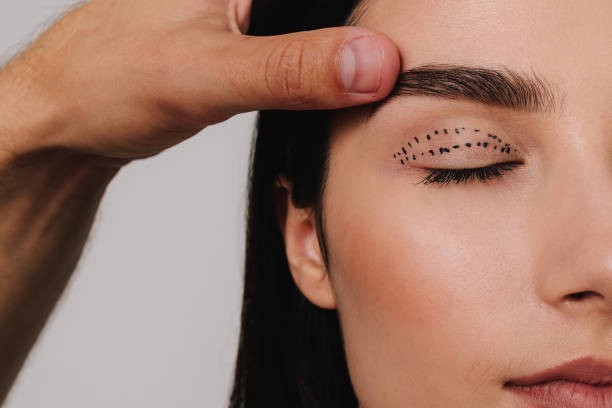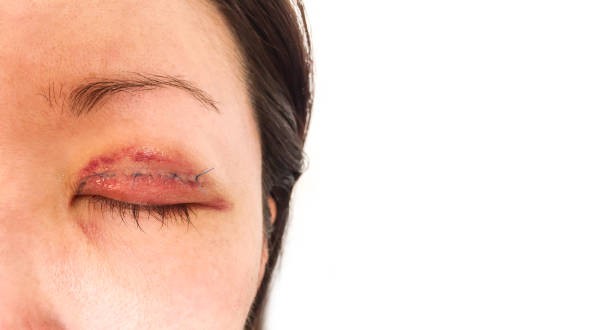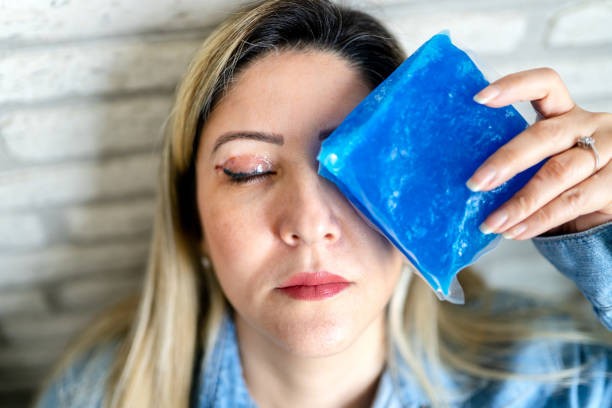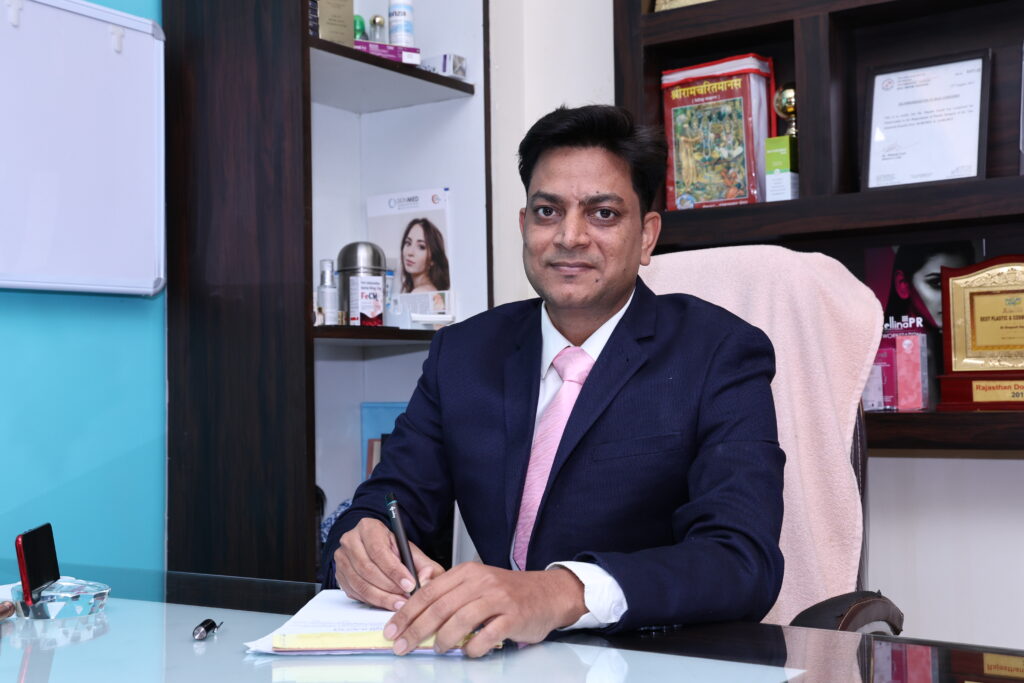
Upper eyelid sagging is one of the most common concerns among men and women seeking eyelid rejuvenation. As we age, excess skin, muscle laxity, puffiness, and droopy eyelids can make the face look tired or older than it actually is. Upper blepharoplasty is a popular cosmetic procedure that removes excess skin and fat from the upper eyelids, helping restore a more youthful, alert, and refreshed look.
According to Dr. Deepesh Goyal, at Rejuvena Cosmo Care, a Plastic surgery clinic in Jaipur,
“Most patients choose upper eyelid surgery because it creates a significant aesthetic difference with minimal downtime. The goal is not to change how you look, but to make you look more awake, natural, and confident.”

Upper eyelid surgery is safe, effective, and commonly performed. But knowing how long the recovery takes is essential to plan your treatment and daily routine. This blog will guide you through Recovery Time for Upper Blepharoplasty, what affects healing, and how to speed up recovery.
How Long Does It Take to Recover from Upper Eyelid Surgery?
The timeline for eyelid surgery recovery varies based on age, skin quality, lifestyle, and how well you follow aftercare instructions. While most individuals can return to routine activities quickly, complete healing occurs in stages.
First 1 Week
Swelling, bruising, and mild discomfort are common during the first few days. Cold compresses and prescribed medications help reduce inflammation. Most people feel comfortable stepping out by Day 7.

Bruising and swelling continue to improve significantly. Most patients resume work within 10 to 14 days. Stitches (if non-dissolvable) are usually removed around Day 5 to 7.
By the 6th week, the eyes look more natural, scars fade, and final results are visible. Makeup, workouts, and regular routines can resume unless advised otherwise by your plastic surgeon in Jaipur.
Planning upper eyelid surgery soon? Book your consultation with an experienced surgeon to understand your personalised recovery timeline.
Factors That Affect Healing Time
Recovery time does not look the same for every person. Some heal faster, some slower. Several factors influence results:
- Age & skin elasticity – Younger skin heals faster because tissues tighten and recover quickly, while mature skin may take more time to settle and show final results.
- Pre-existing medical conditions – Conditions like diabetes, thyroid imbalance, hypertension, or any chronic illness can slow down natural recovery and wound healing.
- Smoking or alcohol intake – Nicotine restricts blood flow and alcohol dehydrates the body, which delays tissue repair and increases the chances of swelling, bruising, or irritation.
- How carefully aftercare instructions are followed – Recovery is always faster when patients apply ointments correctly, rest enough, avoid rubbing their eyes, and follow all post-op precautions.
- Genetics and healing response – Every individual’s body heals differently, so some people naturally recover faster while others take longer even with similar surgical techniques.
- Type of surgical technique used – Advanced and minimally invasive methods generally lead to quicker and more comfortable healing compared to older or more extensive surgical approaches.
Dr. Deepesh Goyal, a leading plastic surgeon in Jaipur, adds:
“Following post-op instructions is non-negotiable. Patients who avoid smoking, protect their skin from sunlight, and rest well always witness faster recovery and better results.”
Tips to Speed Up Healing

Here are practical ways to support quick eyelid surgery recovery and reduce discomfort:
- Sleep with your head elevated for the first few nights
- Use cold compresses as advised
- Apply topical antibiotic ointments if prescribed
- Avoid rubbing, pulling, or touching the eyelids unnecessarily
- Avoid screens and excessive reading initially to prevent strain
- Wear sunglasses outdoors to prevent UV exposure
- Avoid gym workouts for a couple of weeks
Need personalised healing guidance? Speak to Dr. Deepesh Goyal’s team and get recovery care instructions tailored for you.
When to Contact Your Surgeon
Upper blepharoplasty recovery is usually smooth, but you must pay attention to how your eyes feel. If pain is increasing instead of improving, or if you notice yellow discharge, blurry or double vision, or swelling that looks abnormal, these are not regular healing signs.
In such cases, do not wait or assume it will settle on its own. Immediately reach out to your surgeon so the concern can be assessed early and managed appropriately to keep your recovery safe and on track.
Conclusion
Upper eyelid surgery is a transformative cosmetic procedure with a high satisfaction rate and predictable healing pattern. For most people, visible recovery happens within 2 to 3 weeks, and final results settle by 6 weeks. When done at a reputable centre like Rejuvena Cosmo Care under the supervision of an experienced specialist, patients enjoy natural-looking results and improved confidence.
Dr. Deepesh Goyal, a highly experienced Cosmetic and Plastic Surgeon in Jaipur, emphasises:
“Choosing an expert surgeon and following proper aftercare ensures that your eyelid surgery recovery is comfortable, safe, and produces beautiful results. Healing is a process, and with the right guidance, patients enjoy outcomes that look natural and age-appropriate.”
Thinking about getting upper blepharoplasty? Book a consultation today for expert evaluation and an individualised recovery plan.
Frequently Asked Questions
Is upper blepharoplasty painful?
Most patients experience mild discomfort that subsides within a few days. Medications easily control pain.
How long do I need to take leave from work?
Most people return to work within 10–14 days, depending on healing.
Can I wear eye makeup during recovery?
Avoid makeup for at least 2 weeks to support proper healing.
How soon can I exercise after eyelid surgery?
Avoid strenuous workouts for 2–3 weeks.
Will scars be visible?
The incision is hidden in the natural eyelid crease, and scars fade significantly over time.

